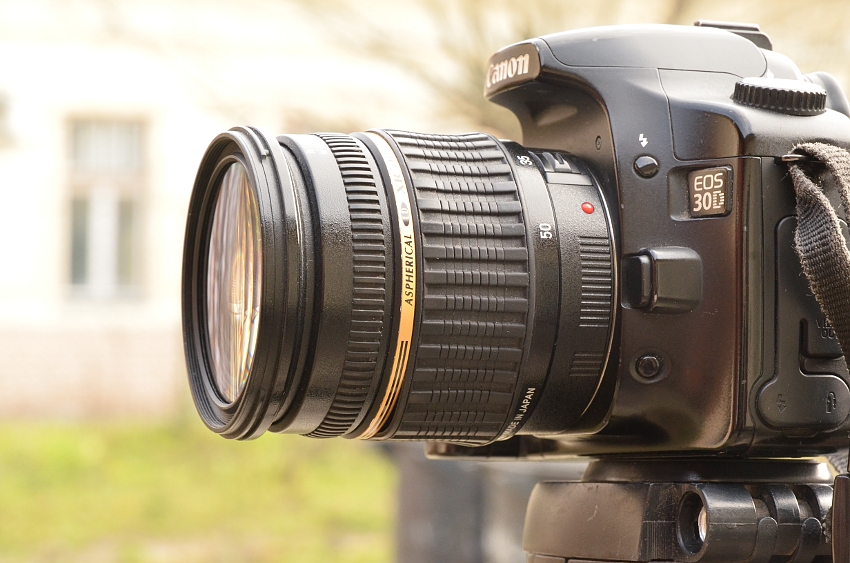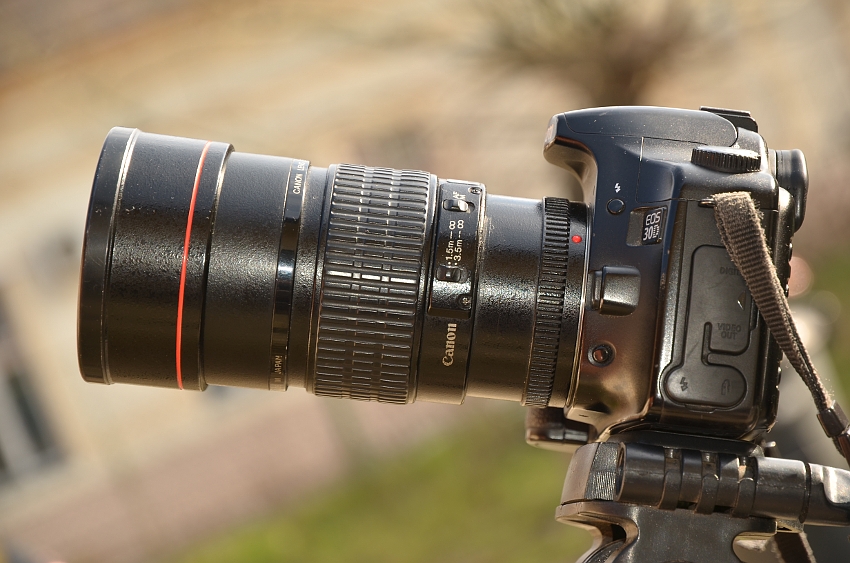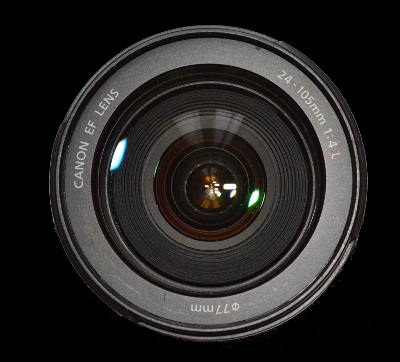Slr camera lenses
Slr camera lenses

The excellent Tamron 17-50 f/2.8 lens on Canon 30d camera
Slr camera lenses
Introduction
I thought to give an overview of Srl camera lenses for the people new in Dsrl photography, or anybody interested. Try to cover all question about slr camera lenses. How much money do they cost, which lens to buy for specific cameras, how to identify them, usual problems with lenses, optical flaws of the slr camera lenses, etc.
Slr camera lens overview
I can classify slr camera lenses in three category:
1. Entry level or consumer lenses
2. Pro lenses
3. Something in between
[do_widget Text]
Pro lenses are usually excellent but very expensive. Uncompromised quality in uncompromised cost. Usually this lenses are not a good bargain for an average amateur. Entry level or consumer lenses, are usually not good enough for enthusiasts. Usually this lenses typically lacking the contrast and colours, and silent quick autofocus system which the pro lenses has. The category in between is hard to define, what does it mean. This lenses can be very fine optically, but not so good mechanically, or the other way, or can be quite good for all regards. Lenses like Canon 50mm f/1.4 or Nikon 16-85 can be in this category, or many third party products. Some of this lenses can be a final one, which can be kept for years for an enthusiast photographer.

Slr camera lens formats
In Srl cameras usually we speak of two formats: Aps-C or Dx(used in Nikon cameras) or Full frame or Fx(Nikon).
The Aps-C cameras has a sensor size of approximately 22.5*15mm, the Full frame cameras has a sensor size of 36*24mm. Earlier times in film cameras most cameras has a sensor size of 36*24mm. There are full format lenses and Aps-C lenses. What is the difference ? Full format lenses can be used usually in Aps-C cameras, but Aps-C lenses are not good for Full frame cameras ususally(Canon lenses cannot attached, Nikon lenses can be used in Dx mode). Obviously for Full format area needed more light as the sensor size is more than double in area. This means Full format lenses are bigger, this way heavier. Aps-C size lenses can be smaller and lighter, beause of the smaller size. Unfortunately manufacturers concentrate more on Full format in this way, few Aps-C lenses are a real keeper. On the other hand Full format coverage is a definite plus if we switch afterwards. This is only a problem in wide angle lenses where the typical FF lenses starts at 24mm, which is not really wide on Aps-C sensor. In the other end long telephoto lenses doesn’t really exist for especially Aps-C sensor.
Slr camera lens compatibility
It is important that the lenses only fully compatible with the manufacturer’s cameras, cannot switch normally lenses between different manufacturer’s cameras. What does it mean? Normally Nikon lenses can be used on Nikon cameras, Canon lenses on Canon cameras, Minolta or Sony lenses on Sony cameras, Pentax lenses on Pentax cameras. But this is not ends here: same manufacturer has older lenses which is cannot be used in newer cameras or not all of the newer cameras, or some functions are restricted. For example older Canon lenses cannot be used on newer Canon digital cameras(there was a converter with glass elements, which is hard to get and not a good solution anyway (lens to a lens)). Entry level Nikon cameras lacking in-built focus motor which is needed for older lenses. The entry level Nikon cameras sometimes doesn’t even meter with older lenses(everything must set manually like in the old times). If you are not sure if a specific lens can be used in a specific camera better to ask. In some cases an old lens can lock the camera.
Inter compatibility
Some lenses can be used on other camera bodies with different types of converters. Nikon lenses can be used on Canon bodies not at the other direction. The cheaper converters lack functionality like autofocus and aperture adjustment, more expensive converters can have these functions but usually to expensive to use them for regular lenses. Canon lenses can be used on Milc or Sony nex cameras.

Cheap(10 EUR) Canon Sony Nex adapter without autofocus and aperture adjustment functionality
“Third party” lenses
There are lenses called third party lenses, which means the lenses not made by the camera manufacturers. Sigma, Tamron, Zeiss, Samyang makes lenses for almost any manufacturers. This lenses usually can be used without problem on the cameras they designed for: For example Sigma lenses with Canon Ef mount can be used on Canon cameras, but the compatibity is not obvious for the future cameras, as the main suppliers obviously not happy with this. Usually the main camera lenses are more fit though with usually better autofocusing system, but they are usually more expensive also.
[do_widget Text]
Kit lens
Kit lens is what the suppliers usually gives with the camera. The usual focal length is 18-55m. This covers the most photographic need for an average person(without telephoto range). Some of this lenses are very good some of them is poor. Bigger manufacturers (Canon, Nikon) usually gives better quality kit lenses. This lenses are good for practicing but usually not for making money from photography. Some of this lenses can make very nice pictures in the hands of skilled people. Today a tipical kit lens from Canon(18-55is) and Nikon(18-55vr) has a very good resolution, but with reduced contrast and saturation. The build quality also cheap plastic, which is not necessary a disadvantage, because they are light in weight. The usually rotating front elements makes hard to use filters.
Pro lens
Other end of the scale is the “Pro”lenses. This lenses are built for heavy usage. This lenses can survive heavy abuse, like dropping on the concrete and usually has very quick, silent and precise autofocus system. The colours and contrast of these lenses are usually much better than the kit lenses. None of them is perfect though, sometimes this very expensive lenses are worse optically than other cheaper product.

Prime or zoom lenses
In dsrl photography prime lenses(single focal) lenses are quite popular. With this lenses cannot zoom, the lens always has the same perspective. This lenses can have wide or narrow field of view as well. This lenses usually brighter and has better optical parameters. This lenses can have very good autofocus as well. The most expensive telephoto lenses are usually prime lenses, widely used in sport and wildlife photography. Zoom lenses are more flexible, we can zoom with them. There are wide and not so wide range zoom lenses: 16-300mm or 28-300mm or only 11-16, or 12-24mm or 200-400mm, or even 50-500mm.
Slr camera lens functions
Manual or Autofocusing
Image stabilisation: helps to make sharp images of static objects in low light.
Focus limiter: the focus limiter speed up the lens autofocus abilites by dividing the range of the autofocus. Usually for close distances the lens is more slowly focuses, limiting closest distance for example at 3m speed up autofocus significanty.
Slr camera lens autofocusing systems
Basically there are there options
1. The lens is only manually can be focusing
2. Screw drive
3. USM(Canon Ultrasonic motor) or SWM(Silent wave motor – Nikon ) HSM(Hypersonic motor-Sigma) Tamron (Ultrasoncic-USD) etc or silent drive quick precise system used in pro lenses
Most used/popular/useful Slr camera lenses
Among enthusiast photographers the following lenses are the most popular: 50mm prime lenses, 85mm prime portrait lenses, 70-200mm telephoto zooms, 17-50 f2.8 lenses, 24-70 and 24-105 full frame lenses, 100 macro lenses, 300 and 400mm prime lenses to name a few.
Slr camera lens optical flaws, and parameters
Most lens reviews talks about strange things like vignetting, colour fringing, chromatic aberrations, lens flare, lens coatings, resolution and such. What does this words mean ?
Resolution
Resolution is one of the most basic characteristics of the lens. This means how much detail the lens is able to resolve on the image sensor. The higher the number, the lens has better resolution. They measured the resolution in several places: in the image center, at mid-frame and the corners. Usually the corners of the frame(jpg image corners) are less sharp, than the center. The sharpness not just determined by the resolution, the contrast is also very important. Perhaps the lens has very good resolution to resolve lots of detail, but with little contrast makes flat or soft images.
Lens flare

Can be more bad than this: more spots or the whole frame can be unusable
The lens flare is when we make pictures involved a direct light source (for example sunset), and the lens loses contrast or different coloured (usually green ) spots appear in the image. It can be different if only small parts of the image are involved or huge part of the frame. Good lenses has little lens flare, the direct or contralight cannot ruin the picture. This is why the lens manufacturers put different kinds of coating on the lens. What does it mean? They put a little layer of cover on the front glass to eliminate flare. If the lens is bad against lens flare in bright sunlight the lens is much less usable.
Vignetting
Vignetting or light falloff is that the picture corners are usually darker than the image center. This difference is different in any lens, some lens is better other is worse. The smaller difference is better, or more preferred. The vignetting is most pronounced in Full frame cameras. This lightness difference can be corrected with software or perhaps some camera corrects it automatically.
Chromatic aberration or colour fringing
In high contrast situations, (a typical is the tree before harsh sunlight) purple lines can be seen next to the dark object. Some camera corrects it automatically. They measure that how wide(how many pixel) is this purple stripe. In very good lenses this is not visible at all, some worse lenses this can be several pixel wide, and makes the picture quite ugly.
Slr camera lens types
We identify different lenses by focal lengths, or in other words the angle of view the lens has. Also we can differentiate manual focus and autofocus lenses.
Fisheye Slr camera lenses
Fisheyes lenses are the widest lenses available even with the angle of view of 180 degree.
Ultra wide angle Slr camera lenses
Ultra wide angle lenses has a focal length of 24 or less on a FF camera 15-16mm or less on the Aps-C camera.
Wide angle Slr camera lenses
Wide angle lenses has the focal length of 24-50mm on FF, 15-30mm of Aps-C.
Normal Slr camera lenses
Normal lenses as wee see, focal length of 50mm on FF, 30mm on Aps-C.
Telephoto Slr camera lenses
50-400mm, or 30-250mm
Super telephoto Slr camera lenses
Super telephoto lenses has the focal length of 400/250mm or longer.
See more about here
Canon slr camera lenses
Canon has perhaps the widest lens lineup together with Nikon. Canon sells the most photography equipment in the world. Older Canon lenses are not compatible with newer Eos (EF mount) digital cameras.
Canon “L” camera lenses
If you check Canon Lens lineup you identify an “L” designation in some Canon lenses. The “L” tag refers to “Luxury” here. Some people like this “L”-s, some people hate. What does this “L” for. Obviously there are some branding here, pay more for this luxury product. This “L” lenses has usually excellent build quality, contrast, sharpness, and colors, but they are not the same. Some of them are excellent others are to expensive for the quality you get.
Nikon slr camera lenses
Nikon kept it’s mount( F-mount where we attach the lenses) this means older Nikon lenses can be used in newer Nikon digital bodies on paper. In reality cheaper Nikon bodies up to 5000 line lacking in-built focus motor, which needs for older lenses. Also even metering doesn’t works with cheaper camera bodies. Some of the older manual focus lenses are a very good bargain if we can use them.
Pentax slr camera lenses
Pentax is also a relatively older supplier with wide range of lenses.
Sony slr camera lenses
Sony is relatively new in the market, earlier Minolta makes lenses for the same mount.
Sigma slr camera lenses
Sigma has it’s own camera, but Sigma makes autofocus lenses for almost every other system: Canon, Nikon, Sony, Pentax.
Tamron slr camera lenses
Tamron also makes autofocus lenses for every possible mount.
Zeiss slr camera lenses
Zeiss makes high quality manual focus lenses for several slr cameras.
Samyang slr camera lenses
Samyang is a newer supplier, but makes excellent manual focus lenses for all slr systems.
Teleconverters
Teleconverters are small optical elements, which we attach to a lens, works as an “extra optical zoom”. This elements magnifies the lens’s picture.
See more about teleconverters here
Used Slr camera lenses
Usually good quality used lenses are a very good bargain.
What to check in used camera lenses before buy?
Basically everything. I start with the seller, why he/she wants to sell a particular lens? Was the lens dropped or not? I usually ask the question directly if I think something is wrong and see the response. This is the first thing I check because it is hard to find out all hidden problems.
After I check the following parameters of the lens:
1. The pictures the lens makes in different focal length and apertures, wide open is very interesting, than f4,f5.6,f8 where I intend to use the lens most. This is the most important. If I do not like what I see, I don’t buy it no matter how good looking is the lens outside.
2. The glasses of the lens’s both ends, perhaps light with a lamp through the lens to see if there is any scratches, or other problems, fungus, dirt inside, etc.
3. The lens’s autofocus speed and precision.
4. Check the barrel how much usage the lens has. Some lens can survive heavy usage, but better to buy used lenses in good new conditions.
Nikon Lens reviews
Nikon Aps-C lens reviews
Nikon 35 f1.8 review
Nikon 18 105 review
Nikon 16 85mm review
Nikon 18 55mm review
Nikon 17 55mm f2.8 review
Nikon 16 85 vs 18 105
Nikon 105mm Vr micro review
Nikon 70-200mm f/4 Vr
Sigma 170-500mm f/5-6.3 review
Canon Lens reviews
Zooms
Sigma 10 20mm review
Tokina 11 16mm review
Canon 15 85 review
Canon 15 85 vs Canon 24 105
Sigma 18-35 f1.8 review
Canon 24 70 f2.8 L review
Canon 24 105 review
Canon 70 200 f4 review
Canon 70 200 f2.8 review
Soligor 100 400/4.5-6.3 review
Primes
Samyang 8mm f3.5 review
Samyang 14mm f2.8 review
Sigma 35 f1.4 review
Canon 35mm f2 review
Canon 40mm f2.8 STM review
Canon 50mm f1.4 review
Canon 50mm f1.8 II review
Tamron 90mm f/2.8 Macro
Canon 135mm f2 review
Canon 200mm f2.8 review
Canon 300mm f4 is review
Canon 400mm f5.6 review
Teleconverters
Kenko 1.4 dgx review
Kenko Pro300 1.4 dgx review
Canon 2x MkII review
Soligor 2x converter review
Kenko 3x converter review
slr camera lenses slr camera lenses slr camera lenses slr camera lenses